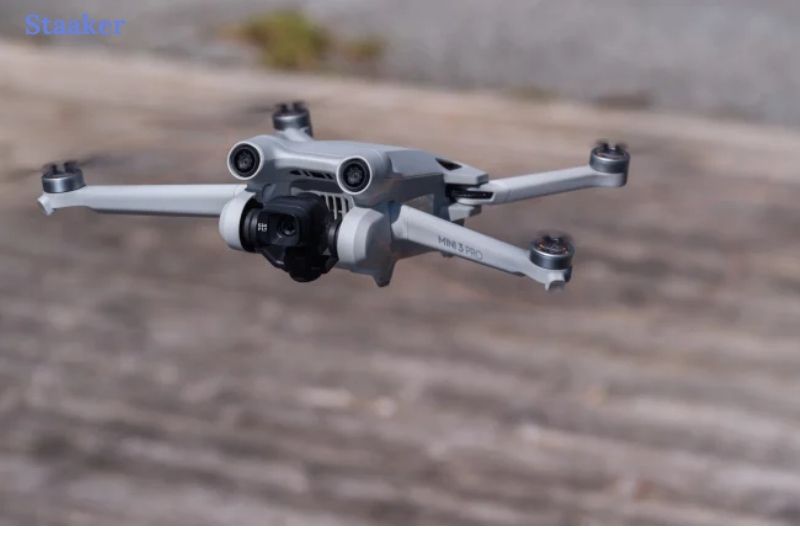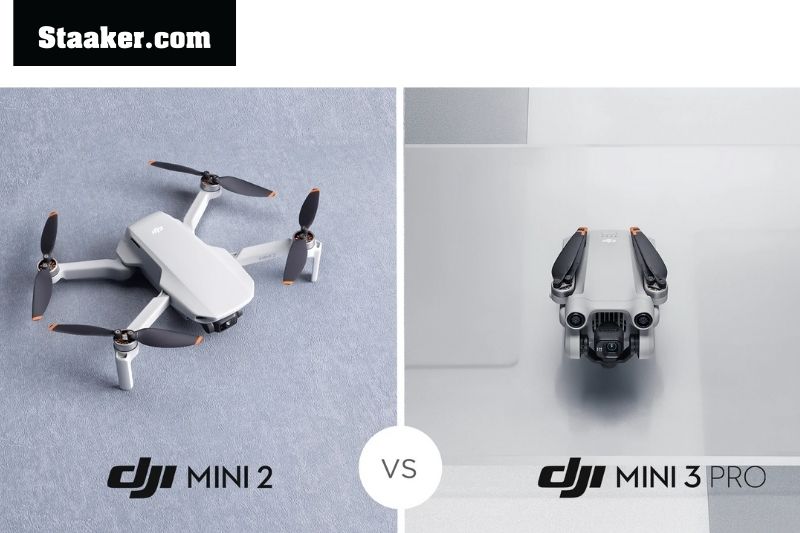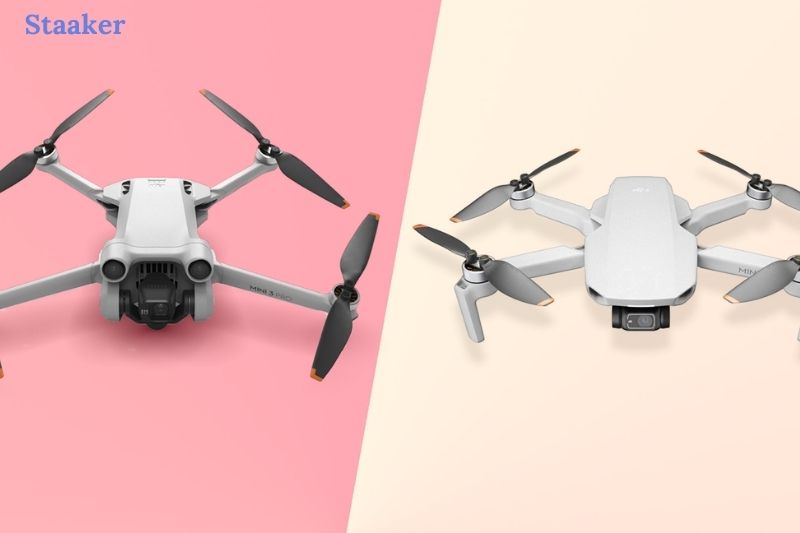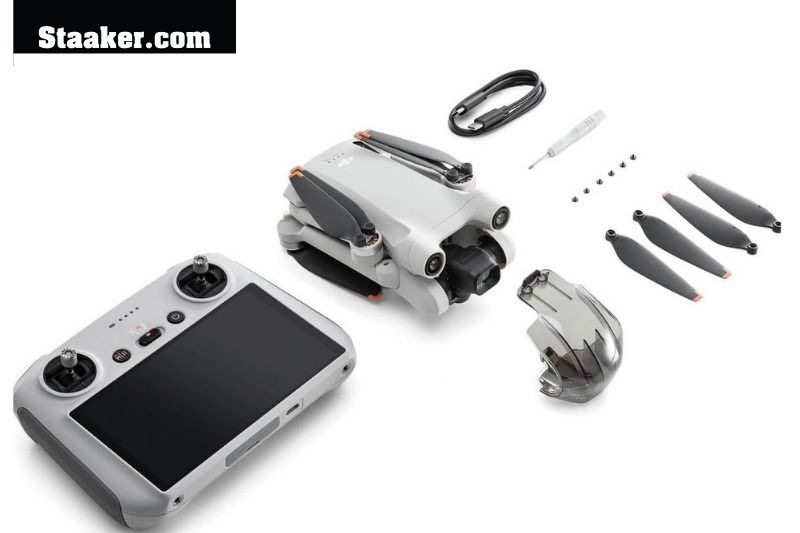It’s time to compare the two most popular drones on the market, the Dji Mini 3 Pro vs Mini 2. Which one is better? Which one should you buy? Let’s take a look at the differences between these two drones to help you decide.
Dji Mini Vs Dji Mini Pro: How Do They Compare?
Price
The DJI Mini 3 Pro is substantially more expensive than its predecessor, with prices starting at about 700 if you don’t need a remote control and about $700 if you do. This is about $300 more than the current Dsm Mini 2 price, which is rough $400.
When you consider the new features of the DJI Mini 3 Pro, though, the disparity makes sense. It’s more than just a software upgrade to update the fundamental components for 2022.
The improved obstacle detection technology alone makes it deserving of the ‘Pro’ label, which isn’t always the case with tech products, with monikers like ‘Pro’ and ‘Plus’ getting thrown out like candy.
When it comes to purchasing, you have a lot of alternatives. The Mini 3 Pro comes without a remote control in the $700 box. The regular remote control costs about $700, while the new higher-end DJI RC remote with a built-in display costs $900.
For an extra, each package can be combined with the famous Fly More Kit. Two more batteries, a travel case, a charging dock, and spare rotor blades are included.
Design And Controller
- Both are under 250 grams.
- DJI RC makes it easier to use integrated display remotes.
Although we’re speaking as individuals who spend a little too much time looking at photographs of drones, the DJI Mini 3 Pro appears to be significantly different from the DJI Mini 2.
It’s essentially the same tiny drone design as before, with a few new visible features and some weight-saving improvements from DJI. The DJI Mini 2, for example, features stabilizer legs at the end of each rotor arm to ensure that it can sit on the ground without falling over.
These have been tucked under the DJI Mini 3 Pro’s belly button. Less plastic means less weight. Sure, but the DJI Mini 3 Pro is substantially larger than its predecessor, both with and without the propellers. The new drone’s full ready-to-fly dimensions are 251 x 362 x 70mm, up from 245 x 289 x 56mm for the DJI Mini 2.
The folded-away measurements for the DJI Mini 3 Pro are 145 x 90 x 62mm, whereas the DJI Mini 2 is 138 x 81 x 58mm. It’s encouraging to see the drones’ sizes shrink as they’re packed away for storage and transportation.
The new obstacle detection cameras on the DJI Mini 3 Pro are the most noticeable visual difference between the two. The nose on the DJI Mini 2 resembles that of a whale shark, while the new design is more insect-like.
DJI has also unveiled a new remote control for the DJI Mini 3 Pro, the DJI RC, befitting its higher-end status. The DJI Mini 2 comes with a remote that connects to your phone’s screen, but you can now acquire one in this familiar style or the DJI RC. The new controller boasts a 5.5-inch screen with 700-nit brightness, which is comparable to that of a smartphone and weighs just 390g, the same as the standard remote.
It’s essentially a less expensive version of the DCI RC Pro, which came with the DJI Mavic 3 and is even brighter at up to 1000 nits, but costs a small sum.
Specifications And Features
- The DJI Mini 3 Pro is equipped with an effective obstacle detection system.
- This enables significantly improved automatic flight modes.
- With the upgraded Plus battery, flight duration increased somewhat or considerably.
New obstacle detection sensors distinguish the DJI Mini 3 Pro from the DJI Mini 2 in an area that first-time drone consumers may overlook: intelligence. The DJI Mini 2 only has sensors that face downward, allowing it to see impediments below.
The DJI Mini 3 Pro boasts many sensors, especially for such a little drone. Downward-facing sensors are still there, but forward- and backward-facing sensors are new, allowing the drone to automate its movements while being considerably more aware of its surroundings.
DJI’s forward-facing sensors provide a horizontal vision of 106 degrees and a vertical vision of 90 degrees. Because the camera sensors are arranged in a line, the width of their vision is extended but not the height. The effective window of rear obstacle sensors is 58 degrees horizontal and 73 degrees vertical.
The pre-programmed Quick Shot flight mode lineups remain substantially unchanged despite this enhanced knowledge. Dronie, Helix, Rocket, Circle, and Boomerang modes are available on both drones. Still, the DJI Mini 3 Pro includes Asteroid, which employs an ultra-zoomed-out effect to turn the ground into a small planet.
These abilities are particularly prominent in the FocusTrack features. The two ActiveTrack 4.0 modes track the topic at a side angle or in a regular ‘follow’ pattern, while Point of Interest 3.0 circles it. These variations of the ‘follow me’ option are one of the DJI Mini 2’s primary capabilities.
The DJI Mini 3 Pro also includes a MasterShots mode, which allows the drone to do a series of moves while maintaining the subject in focus.
With a DJI Mini 3 Pro, getting those professional, dramatic-looking YouTuber B-roll pictures will be much easier than with a DJI Mini 2. That’s perhaps the most crucial feature of this new drone, as it brings its core flexibility closer to that of a DJI high-end drone.
However, there is no difference in speed. Both drones have top speeds of 16 mph and ascents and descents of 5 mph. Even so, it’s only a hair slower than the DJI Mavic Air 2.
DJI has also pushed battery life to its limits, ostensibly through weight minimization rather than dramatically increased aerodynamics or engine efficiency.
The DJI Mini 2 has a 2250mAh battery that can last up to 31 minutes in the air, while the DJI Mini 3 Pro has a 2453mAh battery that can last up to 34 minutes in the air. That’s a 9 percent boost in battery capacity and a 9 percent increase in battery life.
However, some users will be able to perform far better. The DJI Mini 3 Pro may be purchased with an Intelligent Flight Battery Plus power pack in some countries, which increases flight time to an impressive 47 minutes.
According to DJI, this bundle will not be accessible in the EU and several other regions. This is likely because of the extra 40.5g of the plus-size battery, which will push the DJI Mini 3 Pro’s overall weight well past the 250g weight restriction for unregistered drones, which usually includes the battery. While it might be possible to get the battery separately, make sure you think about the legal ramifications first.
Charge speed has also increased. The DJI Mini 3 Pro has a 30W charger that uses the USB-PD standard, whereas the DJI Mini 2 has an 18W charger. It claims to charge the battery in 68 minutes, although you might be able to do somewhat better with a higher-powered adapter; the DJI Mini 3 Pro battery allows charging at up to 37W, according to DJI’s specs.
As planned, DJI has upgraded the DJI Mini 3 Pro’s wireless transmission standard to DJI O3. The maximum range varies in every country, but in the United States, it’s 12 kilometers, up from the DJI Mini 2’s 10 kilometers. When utilizing one of DJI’s remote controllers, the maximum wireless transfer bandwidth jumps from 8Mbps to 18Mbps, giving you a better preview picture.
Instead of the 720p/30fps view of the DJI Mini 2, the DJI Mini 3 Pro enables a 1080p, 30fps live view. The latency has been lowered from 200ms to 120ms.
Image And Video Quality
- Larger sensor, quicker lens, and vertical photography
- Video in HDR mode
- New features include 4K/60p and 120fps slow motion.
The DJI Mini 3 Pro has several key image quality enhancements, but the new vertical shooting option is the most interesting. This features a revolutionary gimbal design that rotates the camera 90 degrees, allowing the drone to record vertical video without cropping into the image.
This clever new feature appears to be in lockstep with all those content makers who will frequently prefer to record video in portrait mode rather than landscape mode.
The DJI Mini 3 Pro includes a brand-new sensor as well. Although this is almost certainly a quad Bayer array sensor meant for 12MP capture, the resolution has been increased from 12MP to 48MP.
But there’s more fantastic stuff to come. The sensor size has been enlarged from the 1/2.3-inch action camera standard found on the Mini 2 to 1/1.3-inch. It has a bigger sensor, which improves dynamic range and low-light capabilities. The Mini 3 Pro’s new lens will also help: its aperture is f/1.7, far faster than the DJI Mini 2’s f/2.8. It’s all good news: a larger sensor and a ‘faster’ lens.
The advantages of the new shooting modes are easier to calculate. The DJI Mini 3 Pro can take 4K video at 60 frames per second, whereas the DJI Mini 2 can only capture 30 frames per second at that resolution.
It also gets a real slow-mo option to record Full HD video at 120 frames per second. If you’re okay with a 30fps final frame rate, the DJI Mini 2 can handle 60fps at 2.7K resolution for a little 2x slow-motion effect in the edit.
The DJI Mini 3 Pro also features an HDR setting, which the DJI Mini 2 does not have. DJI describes this as a natural dual-ISO functionality, implying the use of DOL-HDR. This sensor-level function allows a camera to shoot two exposures simultaneously by reading each line of sensor pixels twice for darker and lighter photos; combining the two increases the dynamic range of the final movie.
Enabling this function reduces the maximum frame rate to 30 frames per second, eliminating the ghosting problem plaguing HDR images.
In higher-quality full capture modes, the bit-rate ceiling naturally rises from 100Mbps to 150Mbps. We also receive a D-Cinelike setting, a ‘flat’ preset designed to give the most dynamic range for individuals who would grade color in the edit themselves.
Avoidance Of Obstacles
The new and improved obstacle avoidance system is another significant upgrade to the DJI Mini 3 Pro. The DJI Mini 2 only has downard sensors, which can only help with positioning rather than preventing collisions while in flight.
The Mini 3 Pro, on the other hand, has sensors on the front and back of the drone and underneath it. The DJI Mini 3 is the safest Micro drone available today, delivering a smooth and safe flight.
APAS 4.0
Another safety feature added to the DJI Mini 3 but not the DJI Mini 2 is the Advanced Pilot Assistance System (APAS 4.0). The Mini 3 Pro uses APAS 4.0 for real-time obstacle recognition and avoidance, helping it stay safe even when flying in challenging areas.
You’ll love the power and protection of APAS 4.0 on the Mini 3 if you enjoy flying around trees in the forest or dodging rough ledges while filming in the desert.
Quickshots And Mastershots
QuickShots is a popular function on the Mini 2 that allows you to capture mind-bending videos easily. QuickShots lets you select from several pre-programmed motions, including Rocket, Helix, Dronie, Circle, and Boomerang. These preset modes will force the Mini 2 to fly in a fast movement, capturing a cinematic video with just a few clicks.
Master shots, the next generation of QuickShots, are available on the Mini 3. master shots will turn any amateur aerial photographer into an expert, allowing you to create professional-looking automatic movies. Choose your subject, and the Mini 3 Pro will conduct a series of sophisticated maneuvers, resulting in a video that will impress all of your friends and family on social media.
Accessories
Optional accessories are available for both the Mini 2 and the Mini 3. An optional Intelligent Flight Battery for the Mini 2 allows you to stay in the air for longer. The optional Two-Way Charging Hub is available on both the Mini 2 and the Mini 3. It can charge both Intelligent Flight Batteries linked to the battery ports and external devices connected to the USB port. The remote control, smartphones, and even tablets are examples.
The Mini 2 has 360-degree Propeller Guards as an option, which can cover the propellers and improve flight safety. This can be a handy feature when flying in complex terrain without obstacle avoidance technology. The DJI Mini 2 Propellers are available as optional equipment for a quieter flying and robust, stable momentum.
In addition to the Wide-Angle Lens and the distinctive DJI RC, the Mini 3 comes with some intriguing extras. The Intelligent Flying Battery Plus on the Mini 3 Pro has a 47-minute maximum flight time, which can be revolutionary for allowing you to capture as much as possible.
It can also be used in conjunction with the ND Filters (ND 16/64/256), which help shift lighting conditions. The ND Filters Set allows you to shoot in practically any lighting situation, ensuring that your footage looks sharp regardless of the time of day.
FAQs
Is the Mini 2 equipped with a 3-axis gimbal?
Mini 2 features 4K/30fps video and a 3-axis motorized gimbal for fantastic image quality that remains smooth no matter how daring your piloting gets.
Is there a Follow Me mode on the DJI Mini 2?
You might be wondering if the DJI Mini 2 has a Follow Me option. The DJI Mini 2 lacks the Follow Me capability seen on other high-end DJI drones. DJI deleted numerous sensors, including those necessary to allow the Follow Me mode, to keep it lightweight, compact, and under 250 grams.
Is the DJI Mini 3 Pro-water-resistant?
No, avoid contact with water while using the equipment because it may cause damage.
Please return and land as quickly as possible if it rains during the flight, and wait until the aircraft is completely dry inside and exterior before operating it again.
Video
Maybe you are curious about other types of drones:
- Dji Mini 2 Vs Autel Nano+: Which Is Better 2022?
- DJI Mini SE Vs Mini 2: Which Is Better 2022?
- Dji Mavic 3 Vs Phantom 4 Pro: Which is Better 2022?
Conclusion
Ultimately, the Dji Mini 3 Pro is a better drone than the Dji Mini 2. It has more advanced features, and it is easier to control. If you are looking for a high-quality drone that is easy to use, the DJI Mini 3 Pro is the perfect option. Staaker.com hopes this comparison was helpful!









